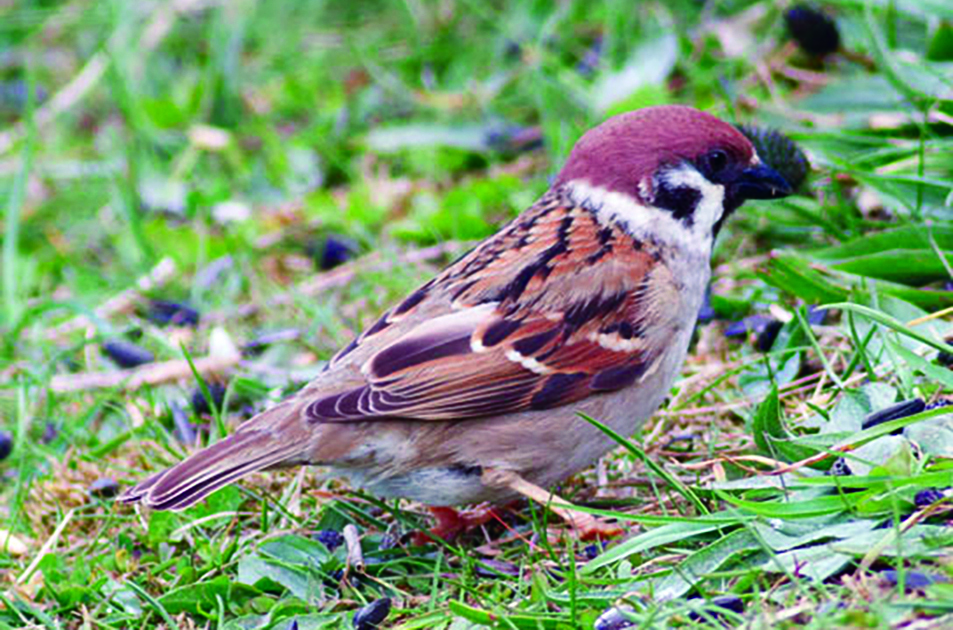Nature Note March 23
Lost But Not Forgotten
Following years of wishful thinking and, in some cases, denial of factual evidence, there is now general acceptance that much of the natural world is in decline. For some species the decline is irreversible, leading to extinction.
Even where a species may be surviving in pockets of protected habitat, ‘local extinctions’ diminish us all and draw attention to widespread declines.
In our area, at least four non-migratory birds, common forty years or so ago, have disappeared or are hanging by a thread. Where have they gone? What would it take to enable them to become re-established?
Lesser Spotted Woodpecker
Although never numerous this sparrow-sized relative of the great spotted woodpecker was widespread locally. As numbers declined fewer sites held birds but some well-known local areas, including Gumley and Wistow, had small breeding populations until about fifteen years ago.
Gone County wide!
Now these are gone. County wide only one or two drumming males are found each year and it is necessary to travel some distance beyond the County to have a realistic chance of finding one.
Willow Tit
Willow tit and marsh tit are two very similar species, best identified by their different songs and calls. Both have always been relatively uncommon locally but until five years ago willow tits could be found, in small numbers, along the valleys of Burton Brook and the River Sence. A national survey in 2019 and 2020 was disrupted by the Covid lockdown but the 2019 fieldwork indicated the absence of birds from many traditional sites.
Nests not more
A pair was found near Great Glen in the course of the 2019 survey work and in 2022 a pair was present near Little Stretton. However, sites where willow tits could almost be guaranteed, no longer exist in our area.
Tree Sparrow

Thirty years ago, tree sparrows were very common in this part of Leicestershire. Any hedgerow with mature trees providing suitable nest holes was likely to have a small colony of these birds. The birds were so common that they would occasionally visit garden bird feeders in winter, alongside the local house sparrows.
Eye Brook is now home for tree sparrows
As recently as five years ago there was a local hedge where tree sparrows were easy to see. Now they are gone and the nearest places to see tree sparrows are Eye Brook Reservoir and Rutland Water. Even at these sites they are being seen in much reduced numbers.
Corn Bunting
Corn buntings were never particularly common locally as they prefer the vegetation found on chalk and limestone to that on our mainly clay soils. However, there was a population of birds i the Foston area. Singing birds would perch on telegraph wires alongside a busy road and could be seen and heard from a passing vehicle.
May still be found
A small population still exists in the far west of Leicestershire and there may be a few birds in Rutland where, however, most previous regular sites no longer hold any birds.
Although these four species have different habitat requirements there are some common factors that seem to have contributed to their disappearance.
Nests and food
Two essential requirements for all species are suitable nest sites and a reliable source of food throughout the year. For sedentary/resident species food requirements need to be met in the vicinity of the nesting area as there is no established pattern of seasonal migration.
The above species all, to a greater or lesser extent, eat more seeds in the winter months and invertebrates in the breeding season. Three of the species use tree hole breeding sites.
Changes contribute to the loss
The changes that have occurred that seem to have contributed most to our loss of these species relate to more intensive arable farming (to provide us with cheaper food) and the removal of damaged hedgerow trees that previously were allowed to decay gradually.
Can we reverse decline?
In some locations, three things are being done to help halt and potentially reverse declines. These are: more set-aside strips sown with seed bearing wildflowers on plots of land where commercial crop yields are low; more targeted use of insecticides and herbicides (which also reduces crop production costs) and tolerance of mature and over-mature trees in hedgerows and spinneys.
In an ideal world, measures such as these would be a requirement in order to attract farm subsidy payments through the new ‘Environmental Land Management Schemes’.
D Scott




 Cheryl Joanne Shepherd
Cheryl Joanne Shepherd

